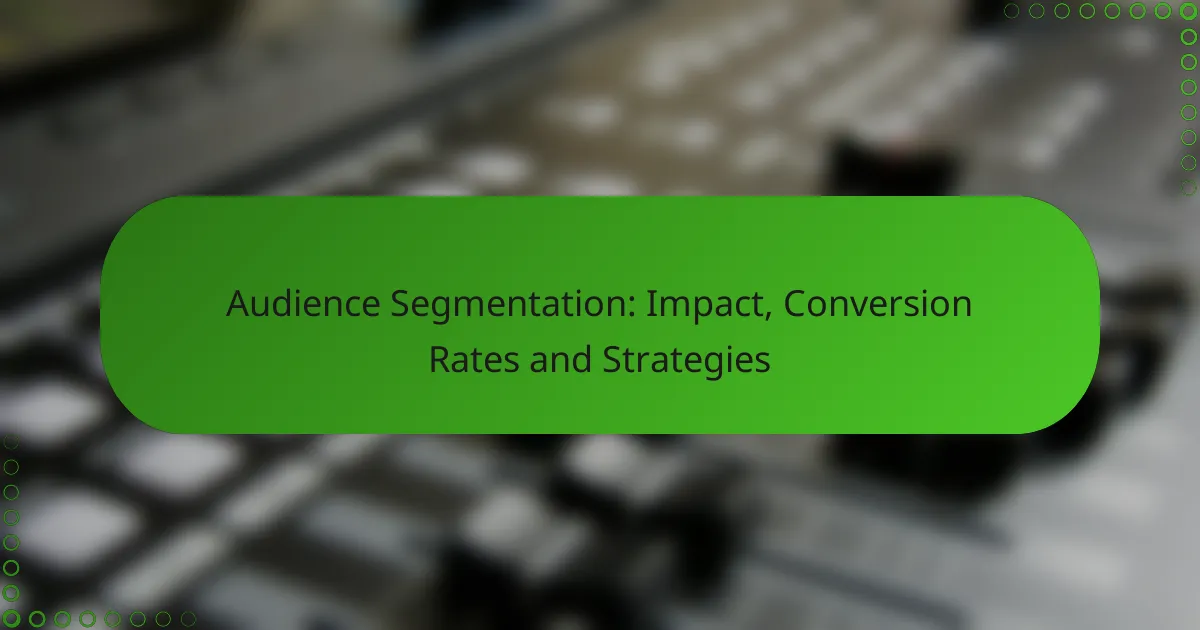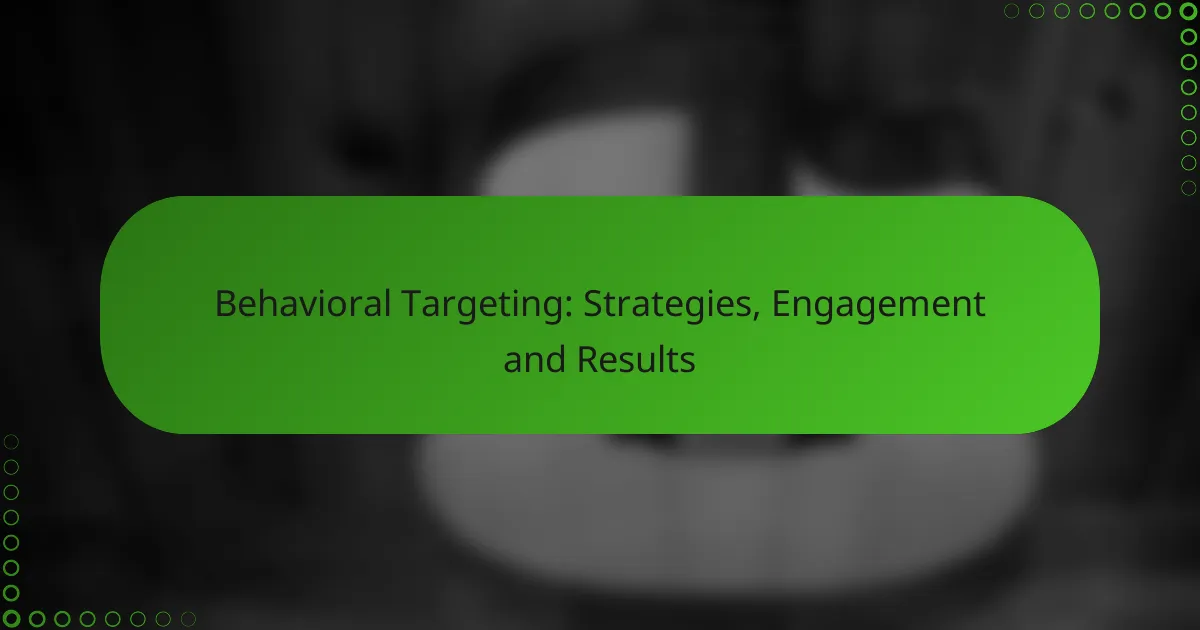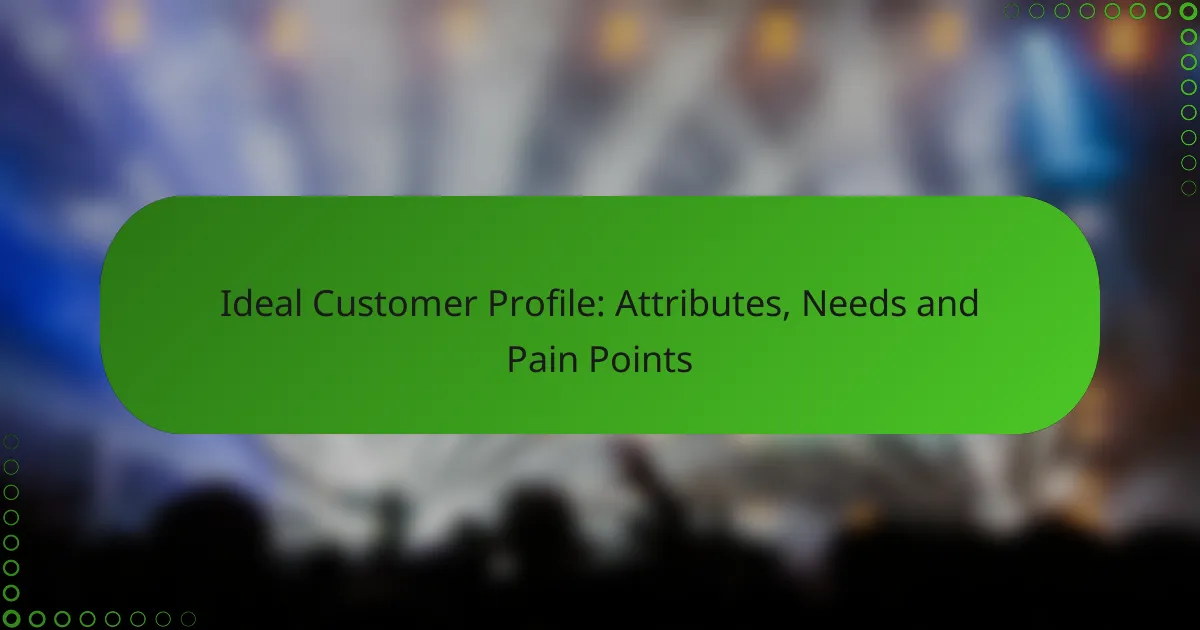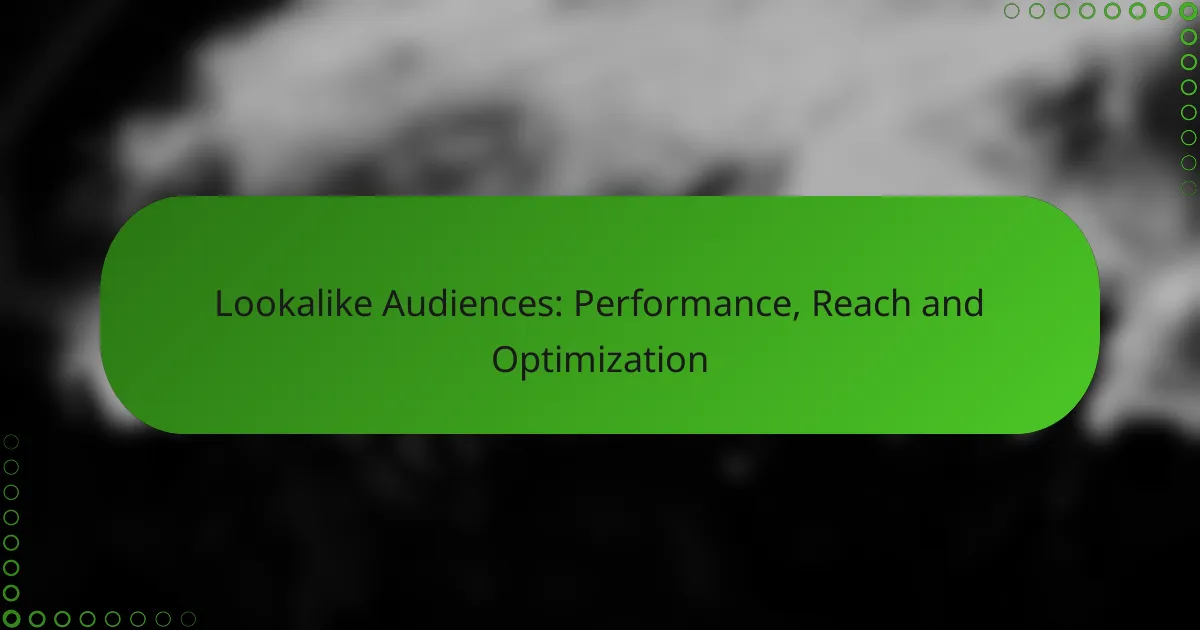Audience segmentation is a crucial strategy that enhances conversion rates by enabling businesses to customize their marketing efforts for distinct groups. By analyzing the unique preferences and behaviors of these segments, companies can craft targeted messages that resonate more effectively with their audience, ultimately driving better engagement and performance.

How does audience segmentation impact conversion rates?
Audience segmentation significantly enhances conversion rates by allowing businesses to tailor their marketing efforts to specific groups. By understanding the unique preferences and behaviors of different segments, companies can create more relevant messages that resonate with their target audience.
Increased personalization
Increased personalization is a direct benefit of audience segmentation. By analyzing demographic, psychographic, and behavioral data, businesses can craft messages that speak directly to the needs and interests of each segment. For example, a clothing retailer might send personalized recommendations based on previous purchases, leading to higher conversion rates.
To effectively implement personalization, consider using customer data platforms that aggregate user information. This allows for dynamic content delivery that can adapt based on user behavior, making marketing efforts feel more tailored and relevant.
Improved targeting efficiency
Improved targeting efficiency results from focusing marketing resources on the most promising segments. By identifying high-value groups, businesses can allocate budgets more effectively, reducing waste on broad campaigns that may not yield results. For instance, a software company might target small businesses with specific needs rather than a general audience.
To enhance targeting efficiency, utilize analytics tools to track customer interactions and preferences. This data can inform which segments to prioritize, ensuring that marketing efforts are both cost-effective and impactful.
Higher engagement levels
Higher engagement levels are often a direct outcome of effective audience segmentation. When marketing messages are relevant and personalized, customers are more likely to interact with the content. This can manifest as increased click-through rates, social media shares, or email open rates.
To boost engagement, consider A/B testing different messages across segments to see which resonates best. Additionally, maintaining a consistent brand voice while adapting content to suit different audiences can further enhance engagement and drive conversions.
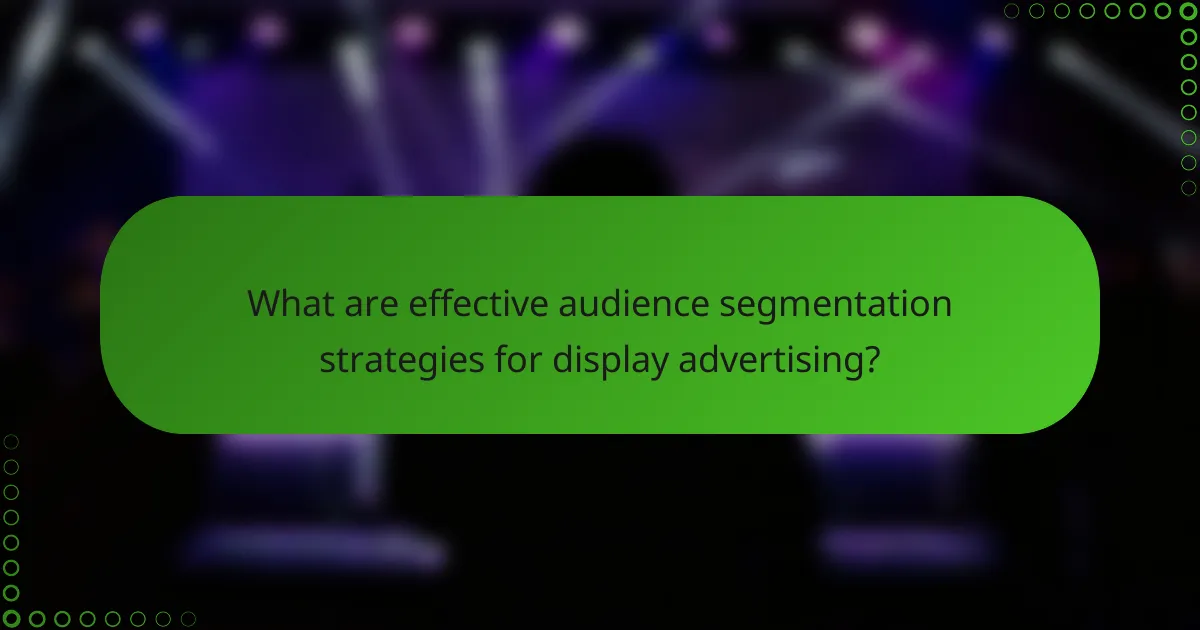
What are effective audience segmentation strategies for display advertising?
Effective audience segmentation strategies for display advertising involve categorizing potential customers based on shared characteristics to enhance targeting and improve conversion rates. By tailoring ads to specific segments, advertisers can increase relevance and engagement, leading to better overall performance.
Demographic segmentation
Demographic segmentation focuses on characteristics such as age, gender, income, education, and family status. This approach allows advertisers to create targeted messages that resonate with specific groups, such as young professionals or parents. For instance, a luxury car brand may target high-income individuals aged 30-50, while a children’s toy company might focus on parents with young children.
When implementing demographic segmentation, it’s essential to gather accurate data. Utilize surveys, customer profiles, and analytics tools to refine your audience segments. Avoid overgeneralizing; instead, consider multiple demographic factors to create more precise targeting.
Behavioral segmentation
Behavioral segmentation divides audiences based on their interactions with a brand, including purchase history, browsing habits, and engagement levels. This strategy allows advertisers to tailor messages based on user behavior, such as targeting frequent buyers with loyalty rewards or re-engaging cart abandoners with special offers.
To effectively leverage behavioral segmentation, track user actions through analytics platforms. Create segments based on behaviors like recent purchases or website visits. This approach can significantly increase conversion rates by delivering timely and relevant ads that align with user interests.
Geographic segmentation
Geographic segmentation targets audiences based on their location, such as country, region, or city. This strategy is particularly useful for businesses with location-specific products or services, allowing them to tailor their messaging to local preferences and cultural nuances. For example, a restaurant chain may promote different menu items based on regional tastes.
When using geographic segmentation, consider local regulations, cultural differences, and language variations. Utilize geotargeting tools to deliver ads to users in specific areas, ensuring that your messaging aligns with local interests and needs.
Psychographic segmentation
Psychographic segmentation categorizes audiences based on their lifestyles, values, interests, and personality traits. This approach helps advertisers connect with consumers on a deeper emotional level, enhancing brand loyalty and engagement. For instance, a fitness brand may target health-conscious individuals who prioritize wellness and active living.
To implement psychographic segmentation, conduct surveys and focus groups to understand your audience’s motivations and preferences. Create detailed customer personas that reflect these insights, allowing for more personalized and impactful advertising strategies. This method can lead to higher conversion rates as consumers feel more aligned with the brand’s values and messaging.

What tools can enhance audience segmentation?
Several tools can significantly improve audience segmentation by providing insights into user behavior, preferences, and demographics. Utilizing these tools effectively allows businesses to tailor their marketing strategies and enhance conversion rates.
Google Analytics
Google Analytics is a powerful tool for audience segmentation, offering detailed insights into website traffic and user behavior. It allows marketers to segment audiences based on various criteria such as demographics, interests, and user engagement metrics.
To make the most of Google Analytics, set up custom segments that reflect your target audience. For example, you can create segments for new visitors, returning users, or users who completed specific actions like purchases or sign-ups. This helps in analyzing the effectiveness of different marketing strategies.
Facebook Audience Insights
Facebook Audience Insights provides valuable data about your audience on the platform, including demographics, interests, and behaviors. This tool is particularly useful for businesses looking to refine their social media marketing efforts.
Using Facebook Audience Insights, you can create detailed audience profiles that inform your ad targeting. For instance, if you identify that a significant portion of your audience is interested in fitness, you can tailor your content and advertising to appeal to that segment. Regularly reviewing these insights can help you adapt your strategies based on changing audience preferences.
HubSpot
HubSpot offers comprehensive marketing tools that include audience segmentation features, allowing businesses to categorize contacts based on various attributes and behaviors. This enables targeted marketing campaigns that resonate with specific groups.
To effectively use HubSpot for audience segmentation, leverage its CRM capabilities to track user interactions and preferences. For example, you can segment your email lists based on engagement levels, ensuring that highly engaged users receive more frequent updates while less active users receive re-engagement campaigns. This targeted approach can lead to higher conversion rates and improved customer retention.
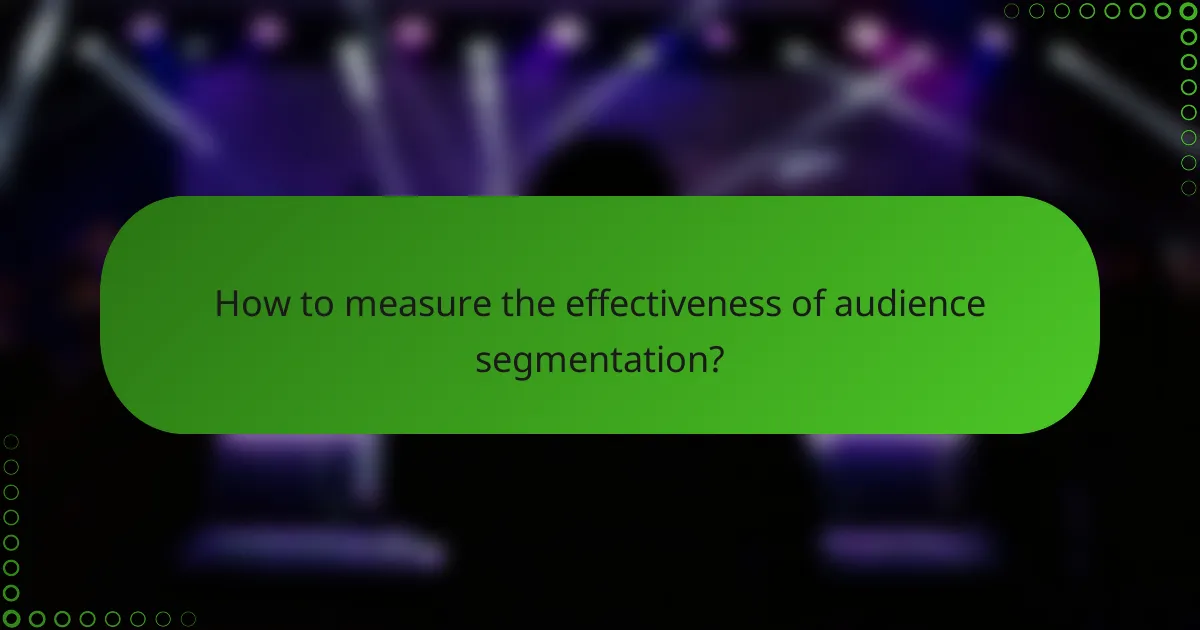
How to measure the effectiveness of audience segmentation?
To measure the effectiveness of audience segmentation, focus on key performance indicators (KPIs) such as conversion rates, engagement metrics, and A/B testing results. These metrics provide insights into how well your segmentation strategies are performing and where adjustments may be needed.
Conversion rate tracking
Conversion rate tracking involves monitoring the percentage of users who complete a desired action, such as making a purchase or signing up for a newsletter. By segmenting your audience, you can identify which groups convert at higher rates and tailor your marketing efforts accordingly.
To effectively track conversion rates, use analytics tools to set up goals and funnels specific to each audience segment. This allows you to compare conversion rates across different demographics or behaviors, helping you understand which segments are most profitable.
Engagement metrics analysis
Engagement metrics analysis focuses on how users interact with your content, including time spent on site, pages viewed, and social shares. Higher engagement often correlates with effective audience segmentation, as targeted content resonates better with specific groups.
Utilize tools like Google Analytics to assess engagement metrics for each segment. Look for trends such as increased time on page or higher interaction rates, which can indicate successful segmentation strategies. Adjust your content and marketing tactics based on these insights to enhance user engagement.
A/B testing results
A/B testing results provide direct feedback on the effectiveness of different audience segmentation strategies. By testing variations of your marketing messages or landing pages with distinct audience segments, you can determine which approaches yield better results.
When conducting A/B tests, ensure that you have a clear hypothesis and a sufficient sample size for each segment. Analyze the results to see which variations lead to higher conversions or engagement rates, and use this data to refine your audience segmentation and overall marketing strategy.
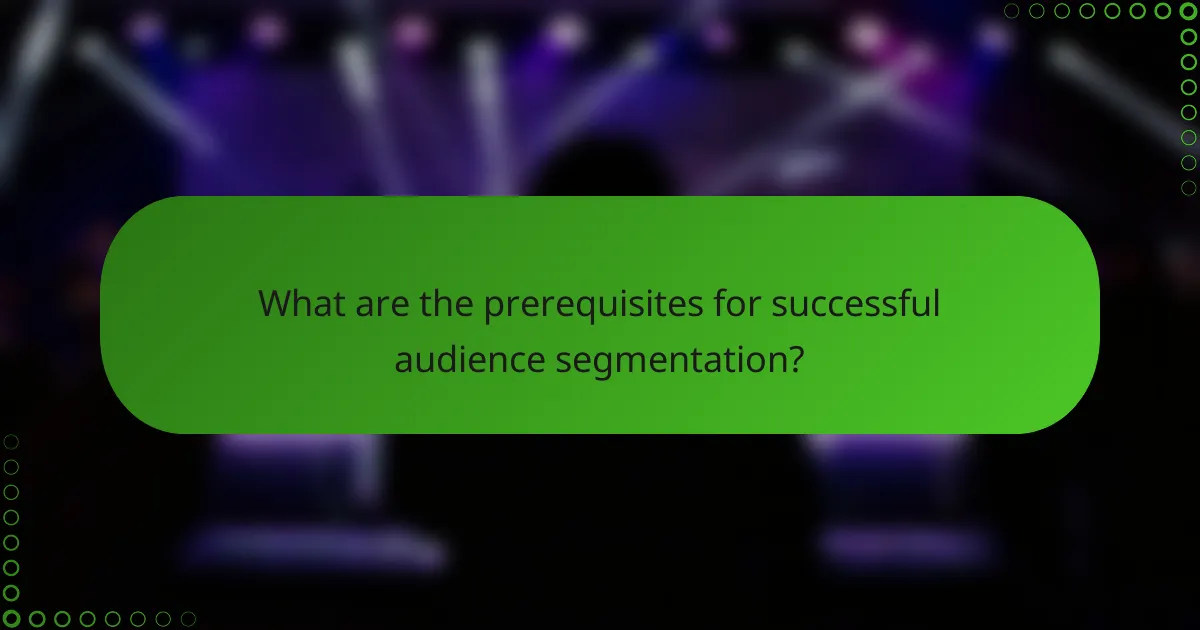
What are the prerequisites for successful audience segmentation?
Successful audience segmentation requires a solid foundation of data, clear marketing objectives, and a deep understanding of customer personas. These elements ensure that segmentation efforts are targeted, effective, and aligned with business goals.
Data collection methods
Effective audience segmentation starts with robust data collection methods. Utilize a mix of quantitative and qualitative data sources, such as surveys, web analytics, and social media insights, to gather comprehensive information about your audience.
Consider employing tools like Google Analytics for tracking user behavior and CRM systems for maintaining customer records. Aim for a diverse dataset that captures various demographics, preferences, and behaviors to enhance segmentation accuracy.
Clear marketing objectives
Establishing clear marketing objectives is crucial for guiding audience segmentation efforts. Define what you aim to achieve, such as increasing conversion rates, improving customer retention, or launching a new product.
Align your segmentation strategy with these objectives by identifying key performance indicators (KPIs) that will measure success. This focus helps prioritize segments that are most likely to contribute to your goals, ensuring efficient resource allocation.
Understanding customer personas
Understanding customer personas is essential for effective audience segmentation. Develop detailed profiles that represent different segments of your audience, incorporating demographic, psychographic, and behavioral information.
Use these personas to tailor your marketing messages and strategies. For instance, if one persona is a budget-conscious millennial, consider promotions that highlight value and savings. Regularly update these personas based on new data to keep your segmentation relevant and effective.

What challenges exist in audience segmentation?
Audience segmentation faces several challenges that can hinder effective marketing strategies. Key issues include data privacy concerns, the complexity of data integration, and the potential for misinterpretation of segment characteristics.
Data privacy concerns
Data privacy concerns are a significant challenge in audience segmentation, particularly with increasing regulations like GDPR in Europe and CCPA in California. Companies must ensure that they collect and use customer data responsibly, which can limit the depth of segmentation.
To navigate these concerns, businesses should prioritize transparency with their audience about data collection practices. Implementing clear consent mechanisms and allowing users to opt-out can help build trust while maintaining compliance with privacy laws.
Additionally, using aggregated or anonymized data can mitigate privacy risks while still enabling effective segmentation. This approach allows marketers to analyze trends without compromising individual privacy, striking a balance between insight and compliance.





